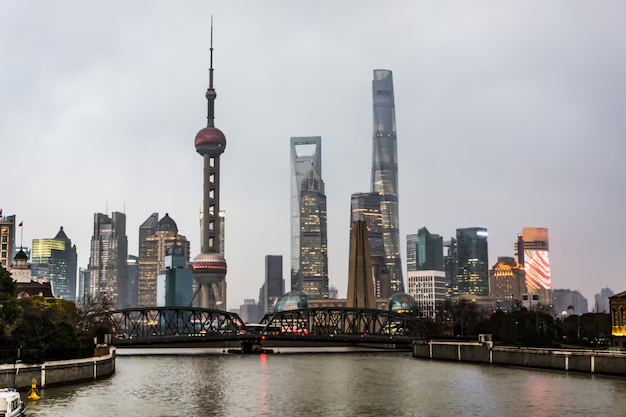As autumn unfolds, cultural tourism in Türkiye is gaining momentum, drawing increased attention to key destinations such as Istanbul, Ephesus, and Cappadocia. Known collectively as the “Golden Triangle” by tourism experts, these iconic regions offer travelers a rich blend of historical, cultural, and natural wonders. The arrival of cooler weather makes it the ideal time to explore these landmarks, each steeped in unique stories and traditions. Istanbul, with its rich historical layers, Ephesus, famous for its ancient ruins, and Cappadocia, renowned for its stunning landscapes and cave dwellings, form a triad of must-visit sites that attract visitors from across the globe.
Tourism officials have noticed a surge in interest as the fall season provides a comfortable climate for sightseeing and exploration. This boost in cultural tourism highlights Türkiye’s diverse offerings, from the bustling streets of Istanbul to the serene ancient city of Ephesus, and the ethereal beauty of Cappadocia’s fairy chimneys. The “Golden Triangle” continues to captivate travelers, offering a blend of history, architecture, and breathtaking natural scenery, making it a top choice for those seeking a memorable cultural journey in Türkiye.
Türkiye boasts 21 UNESCO World Heritage sites, with another 80 locations awaiting recognition on the candidate list. This rich collection of globally recognized sites spans across the country, establishing Türkiye as a premier destination for cultural tourism. Each UNESCO site offers a glimpse into the country’s diverse historical and cultural heritage, drawing visitors who are eager to explore the ancient civilizations and breathtaking landscapes that define these landmarks. The widespread distribution of these heritage sites makes it possible for travelers to experience the country’s cultural depth from north to south, showcasing Türkiye as a treasure trove of historical significance.
Among the many attractions, the “Golden Triangle” of Istanbul, Ephesus, and Cappadocia has emerged as a key highlight for cultural tourism. These three destinations form a captivating circuit that draws in tourists seeking to explore Türkiye’s iconic landmarks. Istanbul, a city known for its blend of ancient empires and modern culture, stands at the crossroads of history. Ephesus, with its well-preserved ruins, tells the story of ancient civilizations, while Cappadocia, with its unique rock formations and underground cities, offers a surreal natural wonder. Together, these three locations provide a diverse and enriching experience that appeals to cultural enthusiasts from around the world.
Visiting all three destinations has become a popular itinerary for most cultural tourists, especially during the cooler fall and spring seasons when the weather is perfect for exploration. These times of year allow travelers to fully enjoy the rich historical sites without the challenges of summer heat. The Golden Triangle continues to captivate cultural tourists, making it an essential part of any journey through Türkiye, particularly for those seeking to delve into the country’s extensive and fascinating heritage.
Western European tourists, particularly from Germany, have long been a consistent presence in many travel destinations. However, recent trends indicate a noticeable shift in the demographics of visitors. While Germans continue to be loyal travelers, a broader range of European nationalities is now exploring these regions. This evolution in tourist profiles reflects changing travel preferences and an increasing interest in destinations that cater to diverse cultural and experiential needs. The steady influx of Western European tourists, combined with this demographic diversification, showcases the adaptability of the travel industry in responding to evolving trends.
This shift has brought about new dynamics in the tourism sector, with destinations adjusting their offerings to cater to a wider range of travelers. Hotels, tour operators, and cultural sites are evolving to meet the varied expectations of these new demographics, ensuring they provide experiences that appeal to both long-time visitors and newcomers. As a result, this change has fostered a more inclusive and enriching travel environment, where the blending of different cultures enhances the overall tourism experience for everyone involved.
Despite the growth and resilience of the tourism industry, significant challenges continue to pose obstacles. One of the primary concerns is the rising cost of fuel, which has a direct impact on transportation expenses for both tourists and operators. Higher fuel prices drive up the costs of flights, tours, and other travel-related services, making it more expensive for travelers to visit popular destinations. This, in turn, affects the overall affordability of vacations and may deter potential visitors, especially those seeking budget-friendly options.
In addition to fuel costs, the increasing entry fees to archaeological and cultural sites have further strained the industry. While these fees are often necessary to maintain and preserve historical landmarks, they can create barriers for tourists who want to explore these cultural treasures. As prices rise, destinations face the challenge of balancing the need for revenue with the goal of providing accessible cultural experiences. These combined factors put pressure on the tourism industry, requiring creative solutions to ensure that travelers can still enjoy rich and immersive experiences without being overwhelmed by costs.
The post Istanbul And Türkiye’s Golden Triangle See A Colossal Autumn Influx Of Cultural Travelers appeared first on Travel And Tour World.




Comment (0)